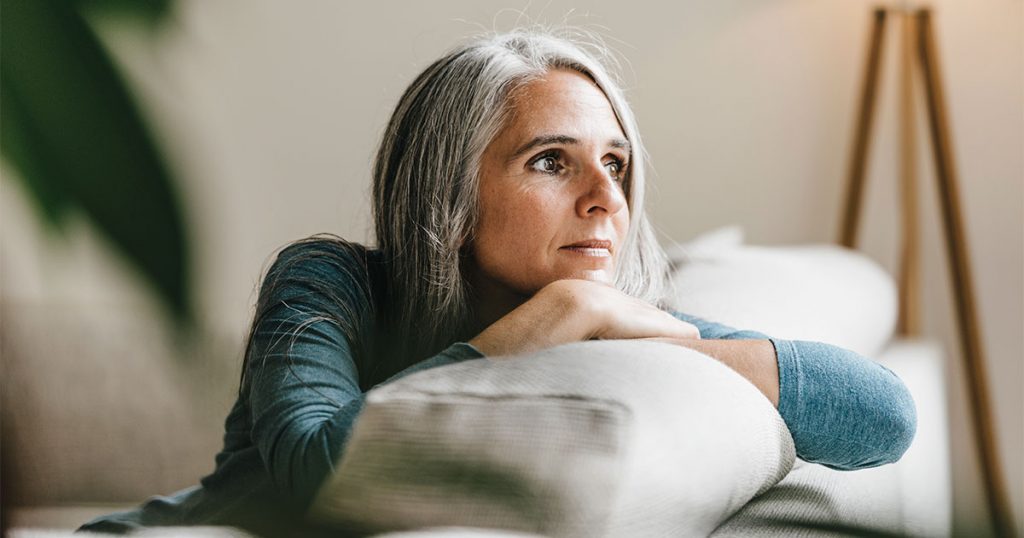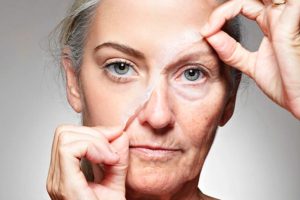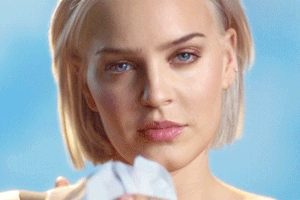My paternal grandmother had hair that was black as pitch until the day she died. She didn’t use boxed hair dye or sneak my grandfather’s Grecian Formula. (He was bald, anyway.) She was a true anomaly.
The Real Deal
The truth is that most of us are going to go grey. And we probably already know that. What few of us suspect, though, is that as we age, plenty is going to change about our hair — not just the color. The specific changes might vary depending on genetics and race, of course, but here are some of the changes some of us (white folks, in particular) might experience.
Around 25, we may initially begin to see a distinction in the surface of our hair. Over the long run, your hair can become coarse, wavy, flimsy, straight, meager, or wavy—which is code for “anything goes.”
Regardless of whether we have an undeniable surface change, there is a decent possibility our hair will become weak. You know the articulation “not delicate like a blossom, delicate like a bomb”? Indeed, our hair’s all the more reasonably traveling toward a delicate blossom—or, all the more suitably, a fragmented toothpick.
We will doubtlessly lose volume (individual strands in reality slender) and sparkle, however to me, the most un-agreeable the truth is that a large number of us will encounter female example going bald, which can start as right on time as age 12. Truth be told: going bald doesn’t just happen to men, and it obviously doesn’t need to delay until middle age to begin the interaction
What’s Going On
A number of “outside forces” take their toll on our hair. There are the ones I consider our own damn fault: a crappy diet, years of over-processing and chronically exposing hair to heat (think flat-irons and blow dryers), product buildup, and smoking.
There are the ones you can’t easily avoid, like medication, pollution, and hard water.
There are the ones that are out of our control, similar to disease, pregnancy, and chemotherapy.
And afterward there are the inescapables, givens that are only an unavoidable truth: stress (physical or passionate), fluctuating chemicals, family ancestry, and age.
Squarely Placing The Blame
I don’t have a problem with the transitions my follicles naturally undergo; I have a problem that no one intimated—or, better yet, shouted—that these transitions were imminent.
Our moms slipped us leaflets to clarify the changes in our young adult bodies (and capriciousness of our dispositions); they cautioned us not to child oil our countenances and broast them in the sun; they might have implied jawline hairs and bunions. In any case, no one, NOBODY, surrendered us the heads about the funk that planned to happen to our hair.
We were ready for the dim—all things considered, we have eyes. Over the long run, our wavy sea shore hair might have been downsized to limp ocean growth, and that is not charming. Be that as it may, our hair seeming as though we gave our groin a perm and slapped it on our head? No—didn’t anticipate that.
Also, in case that is adequately not, what about our hair severing? Gone are the times of the colony of bees and the Rachel—any back-digger ing of our braids would end in a sink loaded with hair roughage or something taking after creased twisty ties. I would’ve liked a heads up there. At any rate so I could purchase a minuscule dustpan.
We analyze our dull hair as requiring a mayonnaise vinegar treatment with a Bud Light wash. We need to fault modest cleanser for our matte wax develop. The truth of the matter is, be that as it may, our hair can volunteer to just grow out of our heads miserable and dull. Had somebody let us know this, Pert might have been free.
Once upon a time, we might have had hair that was too thick for a single braid; now-upon-a-time, we might have the kind of hair that’s just right for a single-strand twist. Nobody ever told us we’d look back at our snarls with nostalgia. Now, I miss my rat’s nest.
We thought thinning hair was a guy problem (which would have been fair since our bodies have had to deal with things like hot flashes, bloating, and insomnia—while men get crow’s feet that make them look spritely and charming). By the time we’re 50, about 40% of us will experience hair loss, especially at the crown of our heads.
I remember seeing women in church with white scalps peeking through sparse strands. I put them in the it’s-your-own-damn-fault category and imagined Aqua-Net and bonnet-hood heat dryers were the culprit. Not so. Had I seen their aunts or grandmas, I would not have been so quick to assume. My fault for jumping to conclusions? Nope. Somebody else’s for not telling me that sometimes heredity is a bitch.
In Closing: Thoughts on Grey
We all ladies have bodies that are transforming for the duration of our lives, a few changes sublime—and some not really. Muscle misfortune and feeble bones aren’t something we’d pick; subsiding gums and out of place vision aren’t wanted all things considered. We’d knot fatigued, wiry, diminishing hair in that classification, as well.
Yet, silver hair? A great deal of us are alright with it, or even need it. We’re alright with the 50-50-50 standard, which proposes “half of the populace has about half silver hair at 50 years old years.”
Perhaps we’re not able to assume the onus of battling it; there is a dreariness to camouflaging those less-pigmented strands. Possibly, in the whole world, there aren’t sufficient scarves, turbans, and caps to keep the dim underwraps.
Then again, we are encircled, basically and face to face, by sure silver haired divas who are totally rockin’ it. I love the lady at my pool who quit shading her hair and went an exquisite, normal dark at 34. Indeed, even teenagers have hopped in and influenced the dark touched hair scene. As right on time as 2015, the silver hair pattern among more youthful individuals sprung up via online media with the “stylish hashtag (#GrannyHair), complete with how-to guides… .”
It might have once been a harbinger of shriveled decrease, however take a gander at Helen Mirren and Lady Gaga and you’ll see exactly how hot a head of silver hair can be.world, there aren’t sufficient scarves, turbans, and caps to keep the dim underwraps.
I’m not sure any of us will ever embrace the thinning, coarse, and dull hair that might be heading our way. But what if the world came to celebrate it as a sign of wisdom and experience, evidence of a life well-lived? Probably not going to happen.
Still, we can at least warn the future’s aging women: your hair’s going to undergo some undesirable changes, and it’s never too early to google some prophylactic remedies.







63 thoughts on “Why Didn’t Anyone Tell Us What Would Happen To Our Aging Hair?!”
Comments are closed.